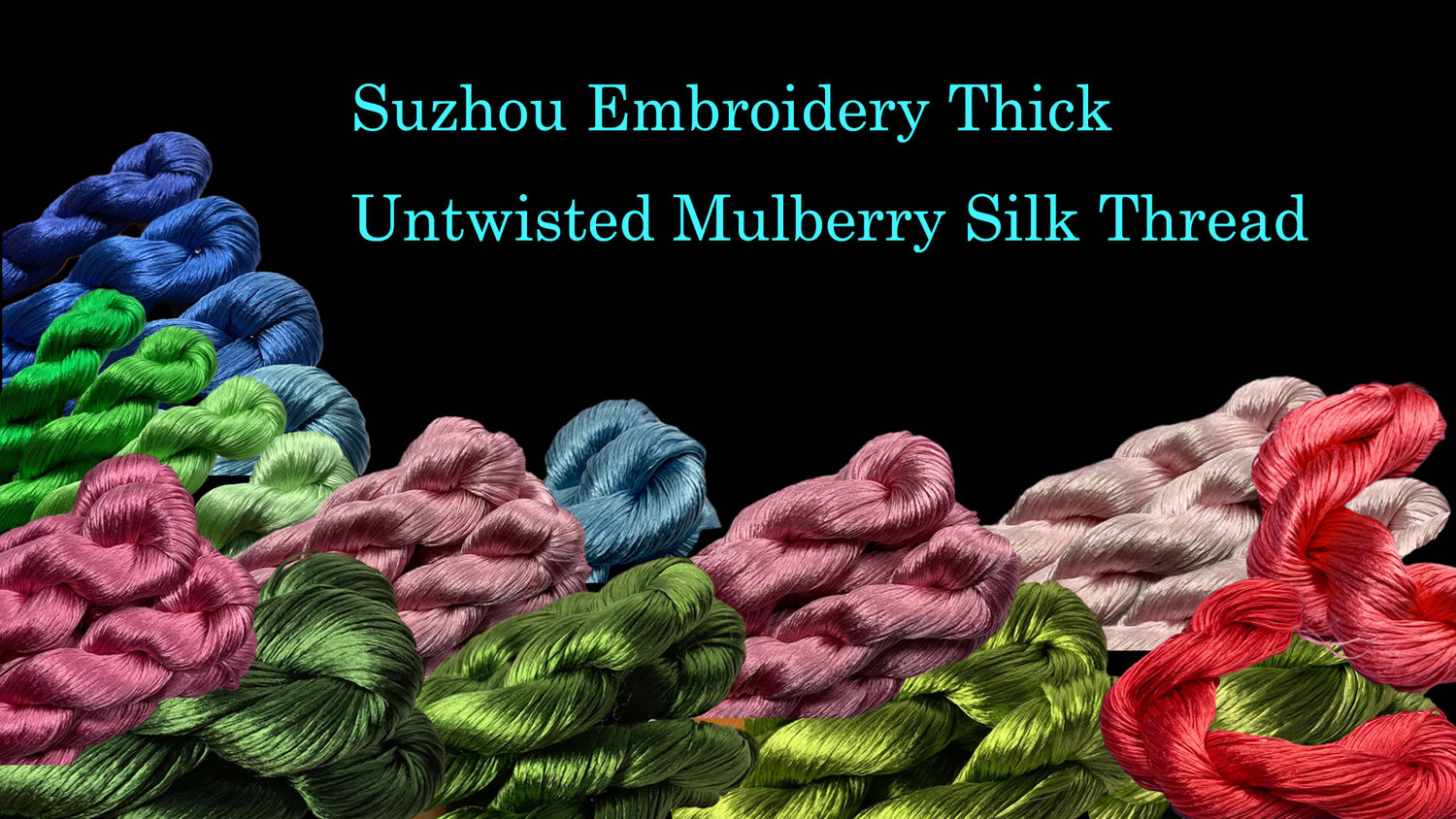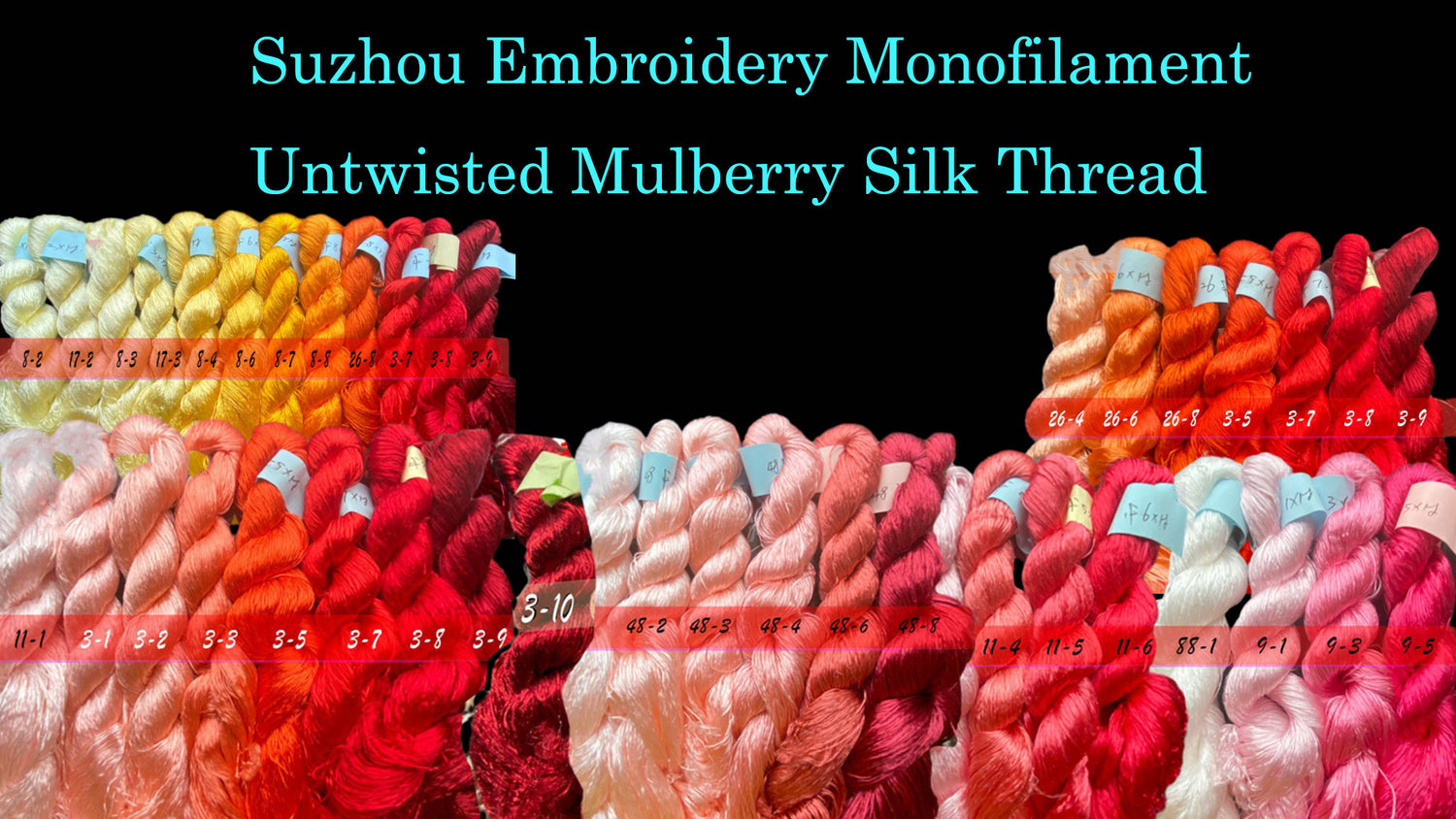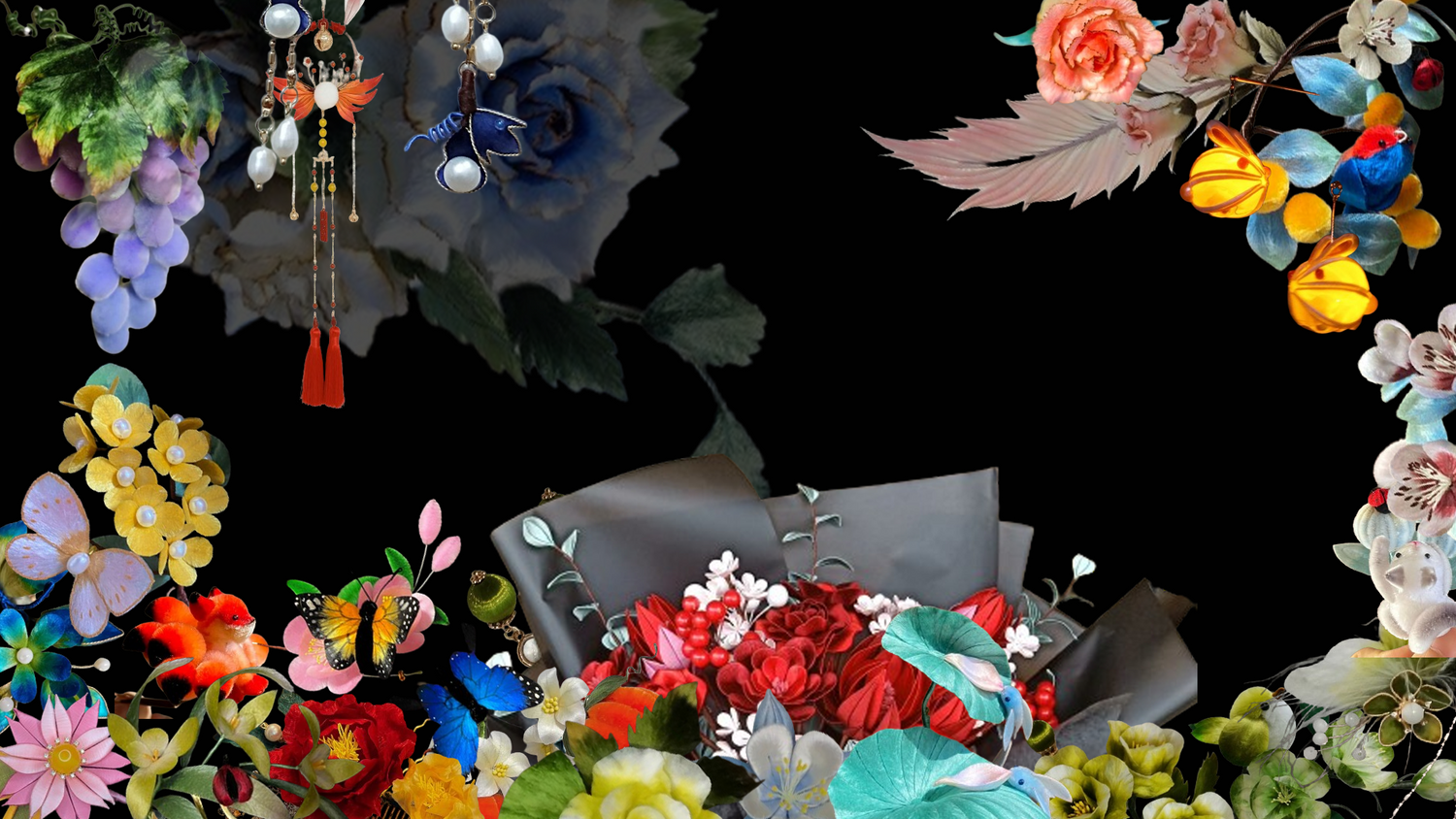
How to Make a Chrysanthemum Chanhua Hairpin
Share
5.3.1 Making the Vase
The vase is an important part of this Chanhua. Combining the flat vase component with the three-dimensional chrysanthemum can create a special visual effect and showcase a unique design concept. This section will introduce the production and assembly methods of each part of the vase.
A. Materials and Tools
White cardboard, carbon pen, scissors, No. 30 silk flower wire, yellow and green silk threads, pliers, 0.2mm diameter brass wire, seed beads, alcohol glue
B. Making the Mouth and Bottom Parts of the Vase
 1 2
1 2
1. Draw the patterns of the vase mouth and bottom on white cardboard using a carbon pen, and cut them out along the lines with scissors.
2. Take a wire and start with green silk thread.
 3
3
3. Place component 1 from Figure 1 in front of the wire, and wrap it with green silk thread from right to left for about 1cm.
 4 5
4 5
4. Fold back the starting end of the wire with pliers to make it close to the white cardboard, then continue wrapping to completely cover the folded wire with silk thread.
5. After wrapping the entire component, continue wrapping the wire for a section, then fix and knot it, folding the excess wire to the back of the component.
 Tip: After wrapping the entire component, the distance continued wrapping on the wire at the end should be about half the length of the component. After folding back, the wire end should be in the center of the component.
Tip: After wrapping the entire component, the distance continued wrapping on the wire at the end should be about half the length of the component. After folding back, the wire end should be in the center of the component.
 6
6
6. Refer to steps 1-5 to complete the bottom part of the vase.
C. Making the Body of the Vase
 1
1
1. Draw the patterns of the vase body parts on white cardboard, and cut them out along the lines with scissors to get parts 3-5 as shown in the figure.
 2
2
2. Take a 0.2mm diameter brass wire, string seed beads on it, and fix the first bead on the left side.
 3
3
3. Hold the brass wire with seed beads and a new wire in the left hand, start with yellow silk thread, and continue wrapping with the white cardboard of part 3.
 4
4
4. After wrapping to a certain position, fold the brass wire with seed beads to the right, wrap a few circles with silk thread, then fold it back to the left. Pay attention to the number of seed beads according to the width of the wrapped silk thread, tighten the wire to fix the seed bead position, and continue wrapping.
 5
5
5. For each segment wrapped, refer to step 4 to add seed beads on the outer edge of the component. The number and specific positions of the seed beads are random.
 6 7
6 7
6. After wrapping the entire component, continue wrapping the wire with silk thread for a section, then fix and knot it, and close the ends together.
7. Refer to steps 2-6 to complete parts 4 and 5.
D. Assembling the Vase
 1 2
1 2
1. Use alcohol glue to join parts 3-5 together, from inside to outside. The larger parts need to tightly wrap the smaller parts.
2. Use alcohol glue to attach part 1 to the top of the vase body, where the wires are gathered, and attach part 2 to the bottom of the vase body.
5.3.2 Making the Chrysanthemum
The chrysanthemum is the main body of this Chanhua. To vividly show the blooming posture and layering of autumn chrysanthemums, we will use a combination of single-sided and double-sided petals. Additionally, the size of the chrysanthemum petals will gradually increase from the inside out. This section will detail the steps for making the chrysanthemum.
A. Materials and Tools:
350g white cardboard, carbon pen, scissors, No. 30 silk flower wire, yellow and green silk threads, 250g white cardboard, brass wire, seed beads
B. Making a Set of Single-Sided Chrysanthemum Petals
 1
1
1. Draw the patterns of 7 chrysanthemum petals on 350g white cardboard using a carbon pen. The petal length is about 2cm. Cut them out along the lines with scissors. Cut each petal symmetrically into two halves to get 14 petal templates.
 2
2
2. Wrap the petals sequentially along the "1-2-3-4" path. After wrapping each petal, combine the two symmetrical templates.
C. Making a Set of Double-Sided Chrysanthemum Petals
 1
1
1. Draw the patterns of 14 chrysanthemum petals on 250g white cardboard. The petal length is about 2cm. Cut them out along the lines with scissors. Cut each petal symmetrically into two halves to get 28 petal templates.
 2
2
2. Take petal "1-2", wrap it with yellow silk thread until the entire template is wrapped, and knot to fix the silk thread to prevent it from loosening, but do not cut it off.
 3
3
3. Take template "2-3", switch to green silk thread to wrap it. After wrapping, add template "4-5", continue wrapping with green silk thread. After wrapping both templates, bend the templates at the junction to combine "2-3" and "4-5" into a complete petal.
 4 5
4 5
4. Take template "5-6", wrap it with yellow silk thread. After wrapping, combine template "5-6" with template "1-2" and fix the wire with silk thread.
5. Bend the junctions of the two petals so that the petals adhere to each other, and thread the yellow silk thread through the gaps between the two petals.
 6
6
6. Tighten the yellow silk thread and wrap it around the wire a few times to fix the overlapping petals.
 7
7
7. Refer to steps 2-6 to complete all petal wrapping to get a set of double-sided chrysanthemum petals as shown in the figure.
8. Refer to the above steps to make petal sets of 3cm, 4cm, and 5cm in length. The 3cm petal set includes 14 sets of petals, while the 4cm and 5cm petal sets each include 5 sets of petals.
Tip: Usually, the templates used for making Chanhua are made of 350g white cardboard, but 250g white cardboard is used for making double-sided chrysanthemum petals.
D. Assembling the Chrysanthemum
 1 2
1 2
1. Arrange the prepared chrysanthemum petal sets according to the positions shown in the figure for easy access.
2. Take the 2cm long single-sided chrysanthemum petal set, bend the petals inward, but do not bend them all toward the center. This way, the flower shape will be more realistic and natural.
 3
3
3. Add the 2cm long double-sided chrysanthemum petal set at the bottom, and bend the tips of the petals inward.
Tip: When assembling the chrysanthemum, make sure the petals are denser on one side and sparser on the other. On the sparse side, bend the tips of the petals downward with a larger curvature. On the dense side, bend the tips of the petals downward with a smaller curvature.
 4
4
4. Add the 3cm long double-sided chrysanthemum petal set at the bottom, and bend the tips of the petals inward.
 5 6
5 6
5. Add the 4cm long double-sided chrysanthemum petal set at the bottom, and bend the tips of the petals inward.
6. Add the 5cm long double-sided chrysanthemum petal set at the bottom, and bend the tips of the petals inward.
E. Making Chrysanthemum Leaves
 1
1
1. Draw the patterns of 3 chrysanthemum leaves on white cardboard. Draw a vein in the middle of each leaf and cut along the vein with scissors to get 6 leaf templates. Arrange them according to the positions shown in the figure, and take them in order from left to right.
 2 3
2 3
2. Take two brass wires, string seed beads on each, then take a wire. Hold the brass wires and the wire together with your left hand, and wrap them together with silk thread.
3. Bend the two brass wires together to the right, add a piece of white cardboard, wrap around the white cardboard and the wire a few times, then bend the brass wires back to the left. Decide how many seed beads to show based on the width of the wrapped wire.
 4
4
4. Refer to steps 4 and 5 of making the vase body components for production.
 5
5
5. After wrapping the leaves, follow the arrows in step 1 to take the next piece of white cardboard and continue wrapping. Note that the inner and outer sides of the second piece of white cardboard should be opposite to those of the first piece so that the two leaves will form an "s" shape when connected.
 6 7
6 7
6. No need to add seed beads when wrapping the second template. After wrapping, combine the two templates into a complete chrysanthemum leaf.
7. Refer to steps 2-6 to complete the other two chrysanthemum leaves.
5.3.3 Overall Assembly
After all parts are made, it is time to assemble the entire work and adjust the shape. This section will introduce the assembly process of each part and the method of fixing the brooch.
A. Materials and Tools:
Green silk thread, finished brooch, UV glue, UV lamp
B. Assembling Each Part
 1
1
1. Fix the 3 leaves on the chrysanthemum. If the stems of the leaves are too long, bend and circle them around the chrysanthemum.
 2
2
2. Fix the vase under the chrysanthemum. Make sure to leave an appropriate length for the chrysanthemum stem.
 3 4
3 4
3. Take a finished brooch, hold the stem of the chrysanthemum and the brooch together with your left hand, and tightly wrap the overlapping part with green silk thread.
4. Use UV glue and a UV lamp to fix the connection between the brooch and the silk thread to prevent the brooch from loosening.
 Finished Product Display
Finished Product Display







